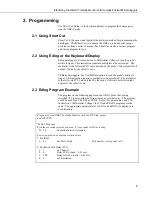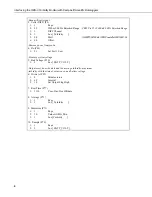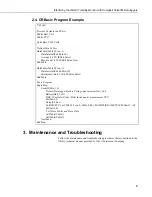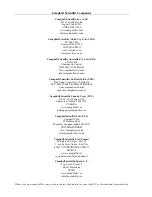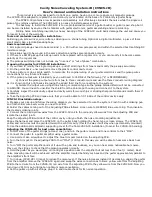
Interfacing the OBS-3 Turbidity Monitor with Campbell Scientific Dataloggers
3
2. Programming
Use Short Cut, Edlog, or the keyboard/display to program the datalogger to
read the OBS-3 probe.
2.1 Using Short Cut
Short Cut is the easiest and typically the preferred method for programming the
datalogger. With Short Cut, you choose the OBS-3 probe and your output
preferences from a series of menus, then Short Cut creates a custom program
and wiring diagram for you.
2.2 Using Edlog or the Keyboard/Display
Edlog dataloggers: Use Instruction 2--Differential Voltage to read the probe’s
millivolt signal. This instruction requires a multiplier to be calculated. The
multiplier is the full scale FTU value divided by the probe’s full scale millivolt
output. Typically, the offset is zero.
CRBasic dataloggers: Use VoltDiff instruction to read the probe’s millivolt
signal. This instruction requires a multiplier to be calculated. The multiplier
is the full scale FTU value divided by the probe’s full scale millivolt output.
Typically, the offset is zero.
2.3 Edlog Program Example
The program on the following page reads an OBS-3 probe that’s using
switched 12 V power, either built-in or using an external relay. The program
could be used for a CR10(X) or CR510. Except for parameters 2 and 5 in
Instruction 2 (Differential Voltage), the 21X and CR23X programs are the
same. The appropriate parameters for the 21X and CR23X are displayed in
bold lettering.
;Program to read OBS-3 Turbidity Monitor with 0 to 2500 mV output
;and 2000 FTU.
*Table 1 Program
;Pick the execution interval you need. Five seconds is OK for testing.
01: 5.0
Execution
Interval
(seconds)
;Power-up probe and provide warm-up time
1: Do (P86)
1: 41
Set Port 1 High
; Port number corresponds to C1
2: Excitation with Delay (P22)
1: 1
Ex
Channel
2: 0
Delay W/Ex (units = 0.01 sec)
3: 100
Delay After Ex (units = 0.01 sec)
4: 0
mV
Excitation
Summary of Contents for OBS-3
Page 4: ...This is a blank page ...
Page 11: ...This is a blank page ...







